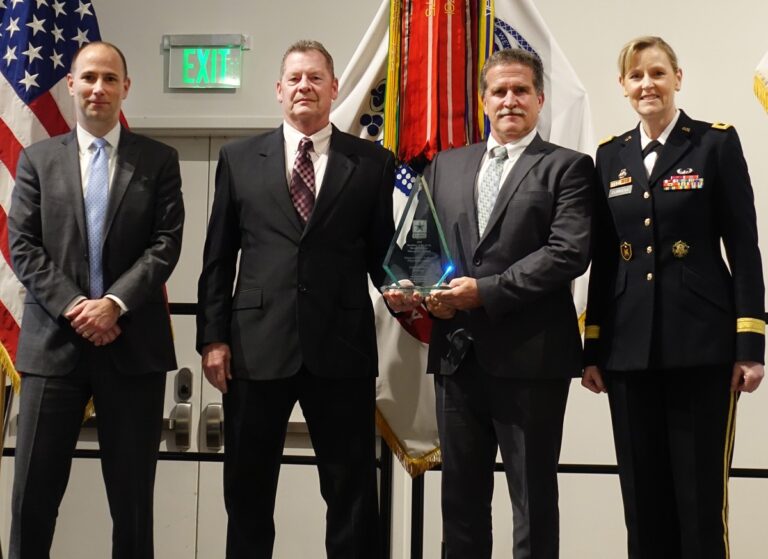The Fort Knox slogan declares to all that “strength starts here.” After this month, Fort Knox can claim the Army’s energy conservation starts here as well.
After 20 years of implementing green conservation technologies across the post, Fort Knox prepares to officially declare energy independence this spring by “pulling the plug” during a public demonstration to showcase the post’s ability to operate autonomously without reliance on outside power providers.
Fort Knox officials plan to invite numerous civilian and military officials to the ceremony to mark more than 20 years of energy conservation achievements.
“We are now able to provide our own power, heat/gas, water, and wastewater elimination, all from on-post sources without any assistance from the grid if we have to,” said Fort Knox Director of Public Works Pat Walsh. “I am not aware of any other installation, except for possibly Kwajalein Atoll, that can make that claim.”
Fort Knox is considered to have set the gold standard across the military for its accomplishments in harvesting renewable power. Katherine Hammock, assistant secretary of the Army for installations, energy and environment, previously visited Fort Knox in 2013 to award the post’s energy team leaders their eighth consecutive Secretary of the Army Energy awards for exceptional performance in innovative technologies. According to Walsh, Hammack has equated energy conservation in the military to saving Soldiers’ lives. Her comments have resonated with Fort Knox’s energy leaders.
“People understand that the Army has a limited budget and more energy usage may take away bullets, or guns, or critical training from our Soldiers,” he added. “Put in that perspective, saving energy is just the right thing to do.”
As the post’s former energy branch chief in the 1980s, Walsh has witnessed Fort Knox transform from the “stone age” to energy’s golden age. “We have come a long way from the days where you could not enter our mechanical rooms due to steam leaks on old boilers,” he said.
The Road to Energy Success
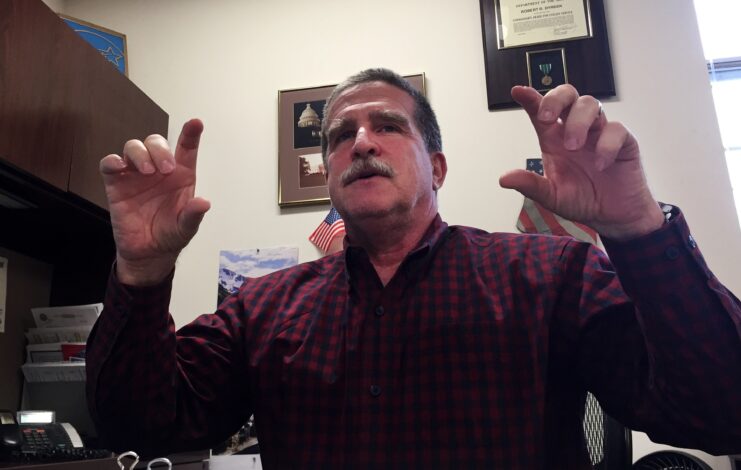
Walsh recalls the early days of energy initiatives, when refuse-fired incinerators were constructed on Fort Knox in an attempt to convert waste to energy. The plant eventually failed because of inadequate technology and poor timing. However, the project exemplifies how Fort Knox was ahead of the curve long before the Energy Policy Act of 1992, which directed all Federal agencies to improving energy efficiency by 20 percent by the year 2000.
During that time, Walsh and his energy team decided to look to the skies for a solution. Working with local power provider Nolin Rural Electric Cooperative Corp., Fort Knox implemented the first known Kentucky wind turbine research project to test the viability of installing additional windmills across the installation as an alternative energy source.
“The purpose of the windmill site was to show whether that solution is a possibility here,” said Nolin RECC Operations Energy Engineer Dustin Ward, explaining that turbine technology has improved over the years since the windmill’s inception, but the lack of consistent wind in Kentucky has never improved.
“The windmill was not going to work as a long term answer,” said energy manager R.J. Dyrdek. “So we had to ask ourselves ‘what do we have in our arsenal of opportunities?’”
The team delved into solar energy solutions, installing 1.57 megawatts of solar panels on roofs around post along with 10,000 panels with 2.1 MW spread across 10 acres. Considered the largest solar array in the Army at the time, energy officials also believe it is the largest in Kentucky. The electricity cultivated from the solar farm is connected to the installation’s internal grid and then supplied into the distribution system for widespread use.
The post cultivates enough solar energy to supplement electricity needs, but the solar arrays also failed the test as a primary solution to the overarching energy puzzle, said Dyrdek. Like inadequate wind for operating windmills, the Kentucky sun was also equally unpredictable for relying on solar energy technology.
In their quest for energy independence, officials turned away from the skies and focused on the earth. After briefly considering using farmers feed stock and cattle waste for energy, the team struck a goldmine in 1996.

“We have great dirt and rocks in Kentucky,” said Dyrdek. “It was then that geothermal heating and cooling became obvious.”
Harshaw Trane, the largest heating, ventilation, and air conditioning design and service company in Kentucky and Southern Indiana, was brought on board by Nolin RECC to spearhead the initiative. The installation quickly took advantage of the renewable energy resource by removing outdated HVAC systems and installing geothermal technology, Dyrdek said.
In the winter, heat is extracted from the ground and transferred indoor, and vice versa in the summer when the pump pushes heat from inside the facility into the ground.
Almost twenty years later, the installation relies on geothermal heating and cooling for 6 million sqare feet space across 109,000 acres. At least 250 facilities are connected to geothermal ground coupled heat pump systems, containing hundreds of 500-feet deep wells and almost 600 miles of underground piping, to move thermal energy from the earth or other buildings to create space heating and cooling.
Fort Knox expanded its geothermal technology in 2012 after receiving an Army energy conservation improvement project grant to build a $1.2 million geothermal pond solely designated to heat and cool the post’s largest facility which houses the Army’s Human Resources Command.
The average bystander may see a typical water fountain built for aesthetic purposes. Others who are more familiar with the post’s energy conservation efforts know the water structure is working to either create or remove heat. As a giant aerator, the fountain has heat exchangers buried in the center to channel excess heat from the building’s data center during the cold months. In the summer, heat is diverted from the building into the water.
By replacing antiquated hot water boiler systems with geothermal technology, Fort Knox tenants benefit from better ventilation, improved indoor air quality and reduced mold exposure. And Fort Knox benefits overall with ratings of 57 percent improved efficiency compared to conventional electricity. By 2008, Fort Knox had achieved major gains in energy conservation technology—and additional plans for more technological advancements were underway.
Stormy Setback Sparks Innovative Energy Gains
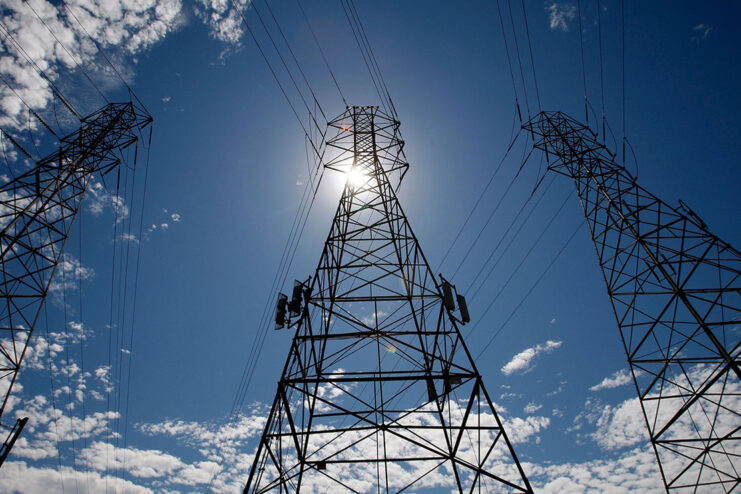
In early 2009, a devastating snowstorm caused an extensive power outage on the installation, ceasing all military operations for almost a week. The severe ice fell trees and limbs, causing damage to all three main electric lines and completely cutting off power to post.
Walsh said the ice storm was instrumental in revealing the single point of failure for electric power delivery to Fort Knox.
The post’s central power was fed from one LG&E substation over three utility lines routed side-by-side.
“When Soldiers and their Families were evacuated from their homes because we could not provide power for them, there was a sense we failed them,” he said. “That is not a feeling I want to experience again.”
An energy “fusion team” was then formed from seven key directorates, including Walsh and Dyrdek, to overcome the installation’s power supply vulnerability. The new team worked with contracted partners to develop short- and long-range strategies, which eventually snowballed into a major seven-year energy security and independence project.
“We were doing so well…then ‘wham!’ the ice storm hit and knocked us out,” Dyrdek said. “But the ice storm, plus the perfect political climate for energy reduction, turned into the ideal equation for going after energy security.”
The Big Break
Part of the energy equation came in the form of methane gas. The installation’s energy officials were already aware of hundreds of drilling wells on private property along the exterior of the installation’s border.
Researching the wells proved Fort Knox’s location coincided with an enormous reservoir of methane gas produced from microorganisms digesting layers of shale beneath the earth’s surface. The reservoir’s depth suggest an estimated trillions of cubic feet of available methane gas, which is expected to last more than 30 years.
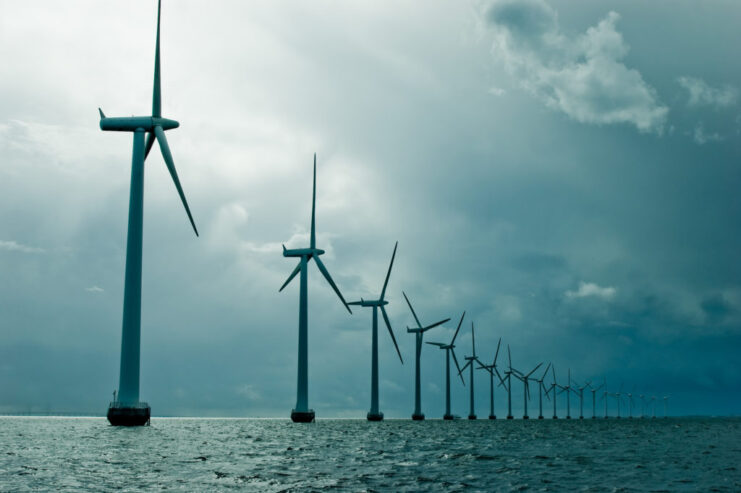
Analysis of the natural gas reservoir, and navigating the statutory and regulatory hurdles, took several years, said Walsh. But the energy team remained patient—and their patience paid off.
“Lo and behold, we had found the answer. Natural gas doesn’t cost too much so the project started to grow. We started thinking ‘what if we used natural gas for the entire installation?’” Dyrdek said. “There were many hurdles in front of us to slow progress down. But we were still able to drive through pretty well uninterrupted.”
Trico Tiger Development, LLC, a South Carolina-based oil and gas exploration investment company, resourced the initial phases of exploration and then constructed the necessary infrastructure for gas delivery on post. “There are at least 15 Army installations with the capability of using natural gas,” said Dyrdek. “But Knox is the only one actually doing it.”
Besides pumping the natural gas into homes and facilities on post, five new electricity generating facilities were constructed using natural gas-powered generators. The byproduct of the electricity-producing generators is heat, which is captured in a process known as combined heat and power. By capturing this “waste heat,” CHP systems work to heat and cool buildings and provide demand backup power to the entire post.
Additionally, in 2011, a Texas Eastern Pipeline was discovered running underground through Fort Knox’s property. One of the largest pipeline systems in the U.S., TETCo is a major natural gas pipeline which brings gas from the Gulf of Mexico coast in Texas and Louisiana through eastern states to deliver gas in the New York City area. Fort Knox received the authorization to connect to the national pipeline to complement the installation’s gas distribution system.
The Powers Combined: Fort Knox Achieves Energy Security
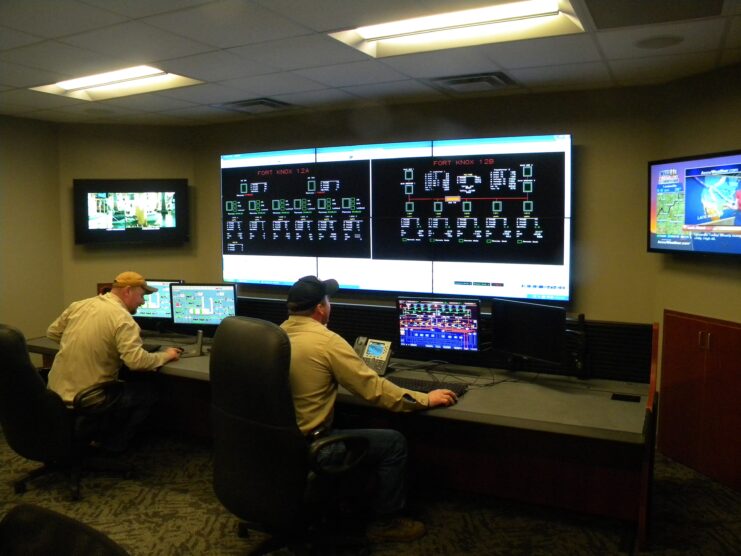
In addition to installing CHP generators, Fort Knox installed primary generators to use for onsite electricity generation when buying power from the public utility grid will be most expensive, such as hot summer days. Known as peak shaving, Fort Knox can rely on its own electricity as needed, thus reducing the installation’s demand. By incorporating this energy security initiative, Fort Knox’s reliance on local utility has been cut by 50 percent, resulting in an annual savings of nearly $8 million.
“Fort Knox has the ability now for 100 percent self-sustainment for long periods of time or in events of emergen-cies or natural disasters,” said Nolin RECC Operations Engineer Greg Lee, confirming how each mission essential component or facility on the installation will have enduring energy sustainment from the natural gas pipelines under-ground. “In a number of years, though, we expect to have nearly a 100 percent load factor under our control indefinitely.”
This means the post will reach a net zero energy usage and become totally indepen-dent of outside provid-ers. By harnessing its own electricity through various alternative energy sources, Fort Knox has become the Army’s only energy green island. The installation is further divided into five electric grids, or mini islands, which receive power distributed across five substations to provide greater energy security and support.
According to Fort Knox officials, the roughly $60 million project is funded from savings through the Defense Logistics Agency’s energy utility privatization program that enables federal agencies to contract local utility companies with power production. With its expected annual savings, Dyrdek expects the project to pay for itself in eight years.
Fort Knox’s Big Brother Watches Energy Output
Dyrdek said he believes installing the most high tech, alternative energy methods will not save money in the long run unless the systems and energy consumers are highly controlled. The energy team says the key to their success is the central, automated control system, which connects all tenant facilities into one, easy-to-use system that serves as the backbone of the installation’s energy management program.
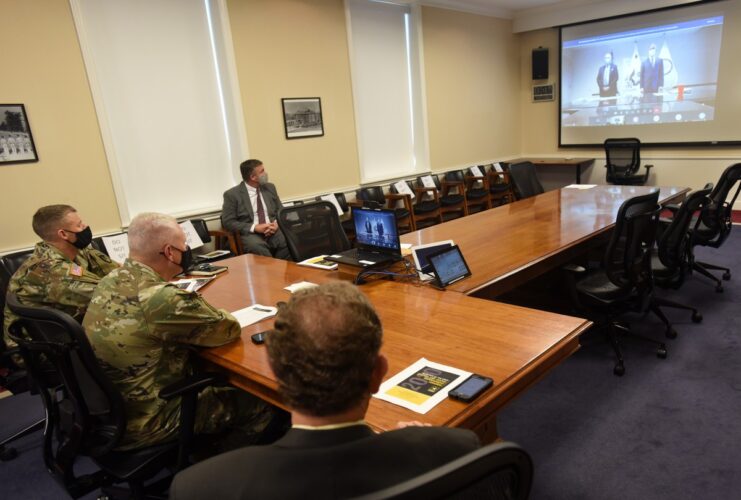
“We’re not wasting gas, so we’re not wasting money because it’s very well controlled,” Dyrdek said, explaining that automations control was implemented at the start of the initiative. “Automated control gives us the chance to succeed, which equates to saving money for the installation, and ultimately end up paying for itself.”
Nolin RECC created the control center, known as the “bunker,” which monitors the energy load with computers, a large interface, and live video monitors to watch of all the substations and generator buildings. The bunker allows technicians to expeditiously resolve any technical issues by visibly identifying a generator problem long before the sensors relay the signal on the monitors.
While Nolin Electric maintains the overarching energy systems control, Harshaw Trane operates the “brain” section of the integrated control center using intelligent monitoring technology to manage energy consumption, diagnose technical issues, and compile data analysis. The web-based control hub, known as the Tracer Summit room, directly monitors thousands of individual control sensors in more than 300 buildings.
As the big energy brother on Fort Knox, HVAC service technicians can digitally peer into office spaces to gauge and regulate temperatures from afar.
“This system allows for user “comfort control” which gives the individual the power to manage their office power output,” said Harshaw Trane HVAC control service tech Brock Berkey. “But when something does go wrong, we have direct control of the site. So this ends up reducing consumer complaints.”
The speed of service also improved or eliminated the need for sending technicians altogether, Dyrdek added.
“On average we can respond to 95 percent of every call we receive daily because we can control everything here from the center without requiring a dispatch,” he said.
Smart Features, Smart Consumers

An integral component to the control center is providing energy data and analysis directly to the units on post, which Dyrdek considers the “first level of control.” Fort Knox tenants can access the program anytime by going online to gauge their energy output. Units have appointed building energy managers and commanders have direct access to the web-based program so they can monitor their own unit’s energy output, he said.
“It’s not just the computerized control that saves money—it’s the consumers too,” Dyrdek stated, citing how saving energy took on a “domino effect” as numerous units on Fort Knox jumped on the energy-saving bandwagon after becoming obsessed to earn their energy gold star from DPW. “By giving the energy data directly to the end user and using live solutions to show how they can become more proficient, we now have an installation of conscientious consumers.”
To save the installation more money, Harshaw Trane and the installation’s energy managers developed real-time solutions at the consumer level—or ‘smart meters’—to increase immediate money-saving techniques.
For example, the DPW provides units with ‘report cards’ by issuing mock energy bills every month as part of an informal installation competition to showcase those who are frugal while identifying those who are wasting money.
“Control at all levels is what will provide the chance to truly succeed,” said Dyrdek. “Small changes reap big benefits, which in turn, will all end up paying for itself.”
Igniting an Energy Obsession in The Community
The energy team also works with local elementary schools to educate math and science students on energy-saving techniques and how they become good energy stewards—whether or not their family lives on post.
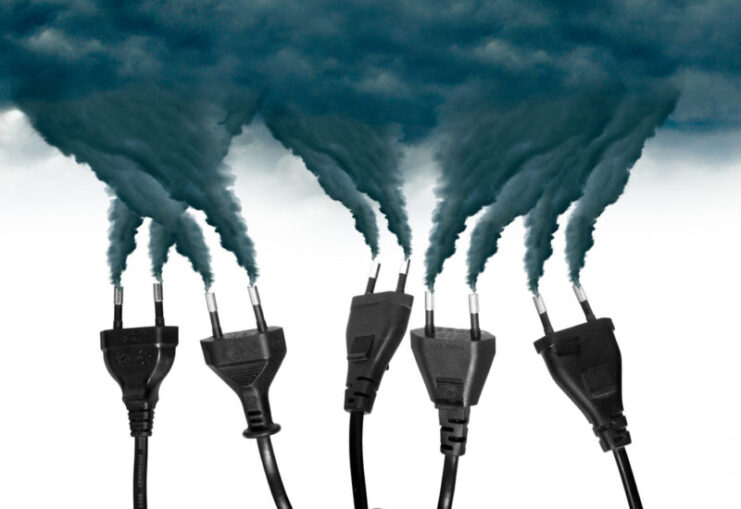
“By reaching out to the schools, we’re actually educating everyone,” said Dyrdek. “The students go home fueled with this knowledge, tell their parents what they’ve learned, and then we hear about it. It’s full circle info dissemination.”
Older students made up of community leaders and educators are learning from Fort Knox’s energy team as well. Engineers and accountants from the University of Kentucky’s Center for Applied Energy Research, Hardin County Chamber of Commerce, and local area school boards have all reached out to the Fort Knox energy team to learn innovative ways to save both energy and money.
“They come to us asking ‘how can we correlate what you’ve done with what we have?’” Dyrdek said, explaining how energy requirements for Soldier barracks are comparable to a university’s student dormitory. “We can show them ways to improve their own control systems.”
Fort Knox residential homes constructed by Lend Lease, the installation’s private partner under the Military Privatization Housing Initiative, were all built with high sustainability initiatives, including geothermal for heating and cooling plus domestic hot water, CFLs in all light fixtures and Energy Star appliances.
Additionally, 46 homes received the second-highest rating in energy efficiency available under the strict rating system of the Leadership in Energy and Environmen-tal Design or, LEED. The 46 South Dietz homes earned a “Gold” rating for outstanding energy, water, and overall performance in the LEED system.
“This was a voluntary effort undertaken by the Fort Knox team,” said project director Phil Wrobel from Knox Hills, the installation’s housing partner. “Prior to this project there were only two homes in the entire state of Kentucky certified in the LEED-H program, and only one of those homes achieved the “Gold” rating.”
The post also developed a “net zero home” by renovating a 1930s building with modern energy efficient technology while retaining the natural character and aesthetics of the home. Known as the Henry House, the building is used by the energy team to demonstrate— and assess—how energy investments can pay off in the long run.
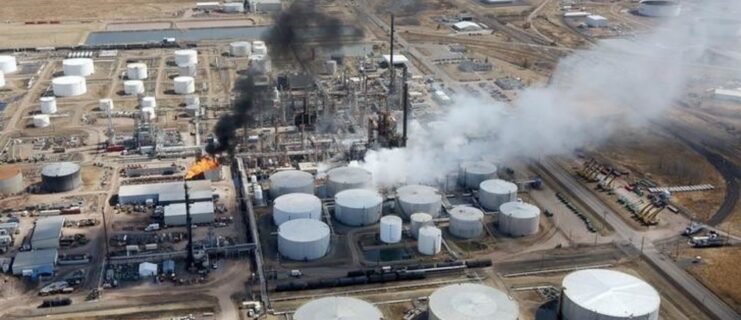
Fort Knox has implemented household and office energy technology such as occupancy light sensors, infrared heating systems, insulation upgrades, weather stripping, energy efficient windows, low flow toilets, faucet retrofits, and increasing windows to harvest natural light.
In 2013, Fort Knox kicked off the LED retrofit operation to install more than 9.5 thousand LED bulbs in 164 homes and buildings, making it the largest LED community in the country. Fort Knox officials cite the small change will save more than $34,000 annually, equaling $860,000 in the 22-year lifespan of the bulb.
The installation now has more than 50 buildings with a national Energy Star certification for using at least 30 percent less energy than federal requirements, making the Fort Knox community one of the top energy conservation small cities in America.
“If we were eligible, we would be considered a ‘small’ city by the EPA. We would be the No. 1 small city in the country in the number of Energy Star buildings we have on post,” added Walsh. “What is particularly amazing is that many of those buildings are approaching 80 years old and—after energy ‘retrofit’—perform as well as modern buildings do today.”
Staying Ahead of The Power Curve
Fort Knox plans to continuously exceed reduction goals set by federal regulations by applying a holistic approach to energy conservation. Construction is ongoing for the Army’s ROTC cadet barracks, which will include all the energy-saving technology successfully launched by the energy team. The installation also plans to install more than 1,200 LED bulbs on street lights across post, which equates to at least 25 percent of the existing five thousand street lights.
In addition to supervising this year’s construction, Walsh said the energy team is already projecting out past five years for the next wave of improvements, including additional solar arrays, converting government vehicles to compressed natural gas, and replacing the HVAC equipment in the HRC complex.
“There is always more we can do as technologies change and technology change is occurring ever more frequently,” he said. “Some of our early energy efficient lighting projects in the mid-90s have long ago paid themselves off and are now dinosaurs compared to modern lighting technology. I think it is almost time to look backward to go forward.”
The upcoming ceremony will also provide a chance for Walsh and Dyrdek to “look backward” in celebration with their fellow team members and leaders for all their achievements. For Walsh, the ceremony marks his “last hurrah” after more than 30 years finding ways to improve Fort Knox’s energy conservation methods. More importantly, the event is an opportunity for the Army to also celebrate their work as a paradigm installation for effectively using renewable power sources to gain energy security.
Fort Knox’s 20-year pursuit to become more conscious of energy conservation has shown that military installa-tions have the ability to “go green” as well as the capacity to implement measures for taxpayers to save “greenbacks.”
“Americans hold the federal government accountable for wise use of their tax dollars,” said Walsh. “We are also accountable to Americans for protection of the environment. We feel like we are accomplishing both.”


